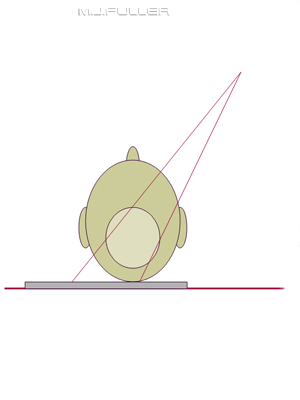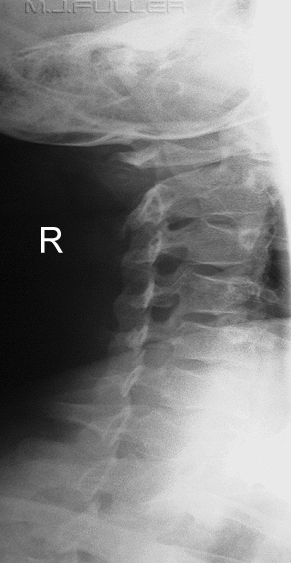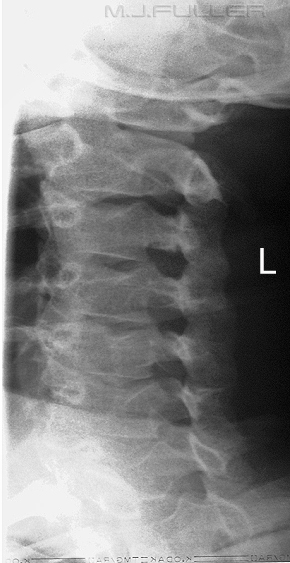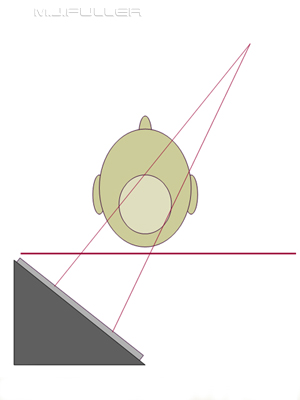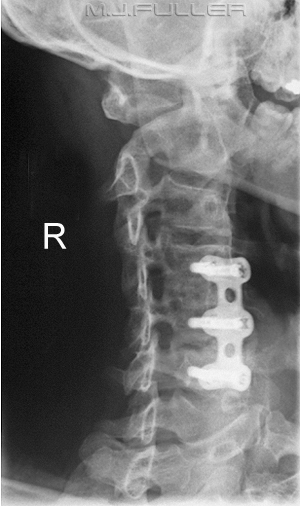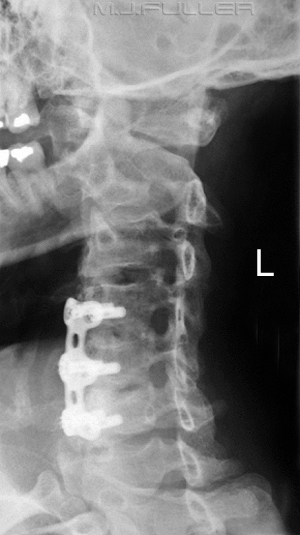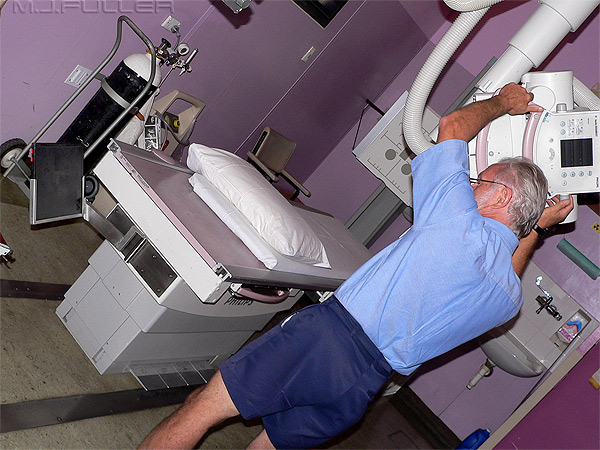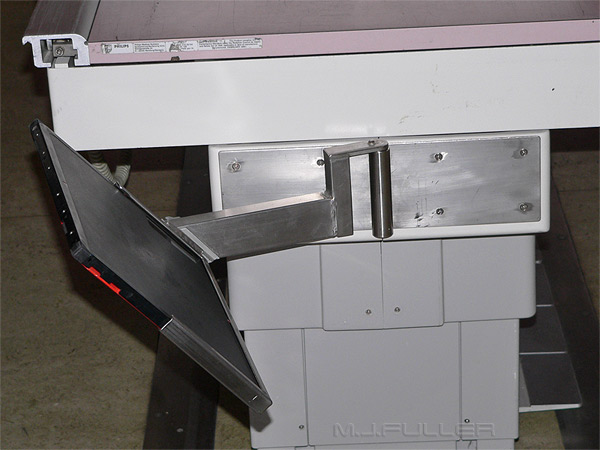Trauma Obliques of the Cervical Spine
Introduction
The oblique projection of the cervical spine is either a routine view or a supplementary view in many Emergency Departments. Whilst this is a relatively easy examination in an ambulant non-trauma patient, it requires a special approach in a trauma patient who cannot be moved. This page considers two approaches to the problem and a useful positioning aid.
Technique 1
This technique is a non-grid technique in which the X-ray cassette is placed on the table top. The X-ray tube is angled 45 degrees as shownThe image is distorted, but does provide valuable visualisation of the cervical facet joints and intervertebral foramen
Technique 2
This technique is a grid or non-grid technique in which the X-ray cassette is placed under the X-ray table at an angle of 45 degrees. The X-ray tube is also angled 45 degrees as shownAgain, the image does provide valuable visualisation of the cervical facet joints and intervertebral foramen. Note that the superimposition of the mandible over the cervical spine bony anatomy was unavoidable in this case.
The Tostevin Cassette Holder
This cassette holder can be found at the Royal Perth Hospital, Western Australia and was designed by John Tostevin. This must be the ultimate accessory for trauma oblique cervical spine radiography.
Conclusion
Trauma obliques of the cervical spine are a technique that can be mastered with a little practise. The images are not always going to be 'works of art', but they do provide quick and easy information which is often what is needed in a trauma situation.
....back to the applied radiography home page here
